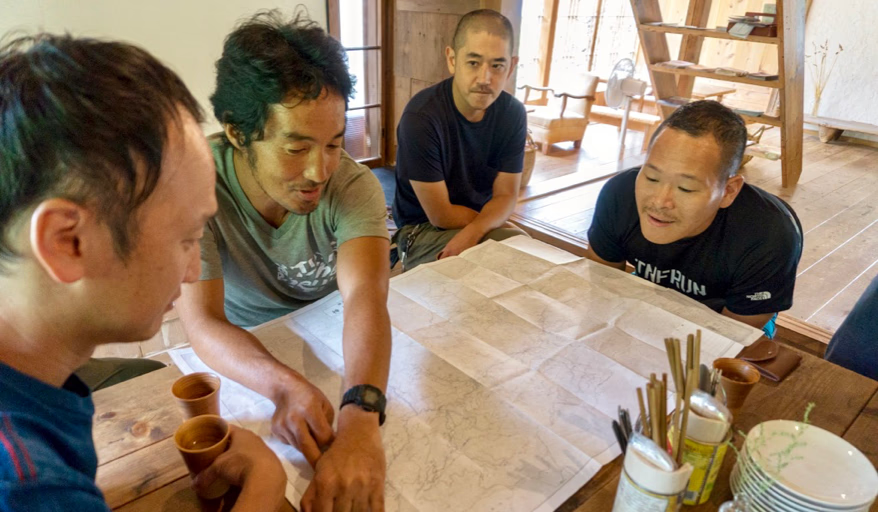9月18日から20日の3日間、徳島県神山町に滞在しました。
私は、普段は東京で活動しているフリーライターです。「働き方」をテーマに取材したり文章を書いたりしていて、ときどきチャンスを見つけては、地方で面白い働き方をしている人に話を聴きに行きます。
昨年はフードハブ・プロジェクトで働く方々にインタビューをさせてもらい、その内容が拙著『本気で社員を幸せにする会社』の一部に。そんな縁があってモノサスさんに声をかけていただき、今回の神山訪問となりました。
テーマは「#これからのワーク・イン・レジデンス」
モノサスはいま、神山町に新たな働き方を考える場所をつくっています。
そこを、普段は都会で働く人たちを迎える場所としたい。神山の土地や人や文化に出会い、考え方や関係性、働き方、生き方が変わるきっかけになるようなプログラムをつくりたい。
ーー事前に聞いたのはこんなお話で、今回のツアーはその企画検討とトライアルの場である、ということでした。
その時点で内容はほとんど決まっていなかったけれど、私はすぐに参加を決めました。「神山だもの。行けば絶対おもしろいに違いない」と思ったからです。
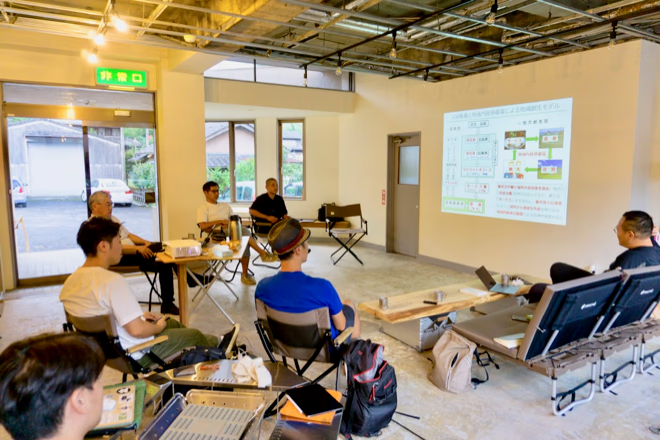
JAバンクの支店だった場所が、働き方を考える場所に生まれ変わろうとしています。
「この会って、なにかハッシュタグとかあります?」
初日に参加者のひとりが問いかけると、モノサスの真鍋さんは「うーん、“#これからのワーク・イン・レジデンス”かなぁ」と答えました。そういえば、出発前にもらった旅程案内のタイトルにもその言葉が入っていました。あとから振り返っても、“これからのワーク・イン・レジデンス”は3日間を通じての大きなテーマだった、と思います。
アーティスト・イン・レジデンスからワーク・イン・レジデンスへ
ワーク・イン・レジデンスというのは、神山町で生まれた独自の取り組みです。
これがどんな経緯で始まったのか、キーパーソンであるNPOグリーンバレーの大南信也さんから、初日に伺うことができました。
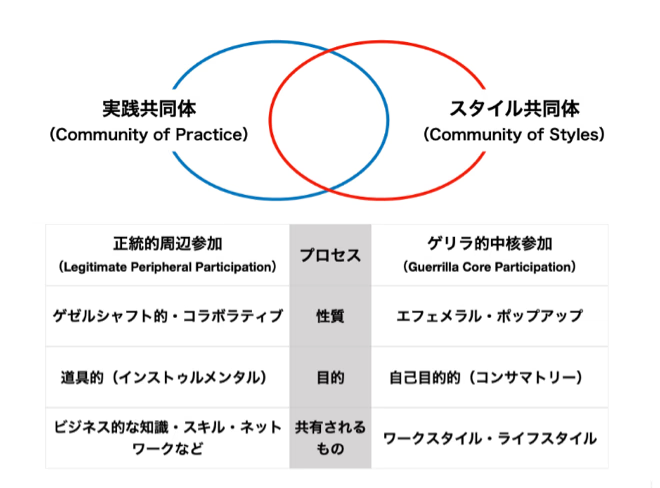
約30年前から、町の内外の人をつなぐ活動を続けているNPOグリーンバレーの大南さん。今は2023年に町内に開校予定の私立高専の設立準備に奔走されています。
いろいろなところに書かれているのでごく簡単に紹介すると、ワーク・イン・レジデンスのきっかけには「神山アーティスト・イン・レジデンス」があります。
大南さんらが1999年に始めた活動で、毎年3名、国内外のアーティストを招き、住民が制作活動を支援。アーティストは町に作品を残していく、というプログラムです。
いわゆる現代アートの芸術家というのは、普通の人からすると相当変わっているでしょう。のどかな田舎町でそのような人たちを受け入れられたのは「お遍路さんをお接待する文化があるから」、という話をよく聞きます。外からやってきた人を迎え入れてサポートするという習慣が、昔からあったのですね。
アーティスト・イン・レジデンスの成功が神山への移住希望者を増やし、後のワーク・イン・レジデンスにつながります。グリーンバレーが希望者に対して空き家の紹介など移住の支援をするのですが、「この家にはこういう職業(ワーク)を持った人に来てほしい」ということを考え、町が移住者を逆指名するというのがユニークなところです。
これにより、神山町にはフレンチレストランや珈琲焙煎所を開く人、デザイナーや映像作家など多様な人がやってきて、さらには東京のIT企業などのサテライトオフィスも進出。移住者も雇用も増やす結果となったのです。
ワーク・イン・レジデンスとワーケーションの違い
グリーンバレーが始めたワーク・イン・レジデンスは、職業を持った人が神山を継続的な拠点とすることに主眼にあります。対して、モノサスがやろうとしているのは短期滞在型のワーク・イン・レジデンスです。
普段と違う場所で仕事をすることを表す言葉は、ノマドワーク、リモートワーク、サテライトワークなど、いろいろあります。特に、旅と仕事を組み合わせたワーケーション(Work + Vacation からの造語)は、「どこで過ごすか」が重要である点で、ワーク・イン・レジデンスと近いように思います。
大南さんのお話を聞いて、それらの違いも見えてきました。ワーケーションはそれをする本人と行く場所があれば成り立つけれど、ワーク・イン・レジデンスは地元の人の関わりが重要。そこに根を下ろして商売していこうとするならもちろんのこと、短期的な滞在においても「神山の土地や人や文化に出会う」には、神山をよく知る人のサポートが欠かせません。
ワーク・イン・レジデンスから生まれる実践共同体・スタイル共同体
参加者のひとりである実践女子大学 准教授の松下慶太さんのレクチャーも、重要なヒントになりました。
松下さんが話してくださったのは、モバイル・メディアやソーシャル・メディアが私たちのコミュニケーションや働き方をどのように変容させているか、ということ。中でも「実践共同体とスタイル共同体」という考え方に可能性を感じました。

実践共同体とは、共通の関心事や課題をもち、持続的に交流しながらそのことについてのスキルや知識を深めていくコミュニティのこと。これまでのワーク・イン・レジデンスの当事者たちは、「神山でどう生活し、働いていくか」という共通テーマをもつ実践共同体だと言えるでしょう。
スタイル共同体はワークスタイルやライフスタイルを共有する、一時的、あるいはかりそめのコミュニティを指します。
モノサスの働き方を考える場所をベースに神山に短期滞在する人たちは、それぞれ異なる関心や目的をもっていて、出会っていきなり実践共同体になることはないでしょう。
でも、「神山でワーク・イン・レジデンス」という名目で来ている以上、町への好奇心や「そこで何かが得られそう」という期待を多かれ少なかれ持っているはず。その場で出会い、交流することで、ゆるやかなスタイル共同体が生まれていきそうです。それがきっかけで継続的に町と関わりたくなった人は、実践共同体にも入っていくでしょう。
ワーク・イン・レジデンスにあって視察旅行にないもの
地方創生の先進地として注目される神山には、日々たくさんの視察者が訪れます。私自身、取材や視察のために過去に4度神山を訪れました。でも、視察や取材はワーク・イン・レジデンスとは違います。そこにワークの要素はあれどレジデンスの要素はほとんどありませんでした。
レジデンスの要素とはなにか。今回のツアーにおけるそれは、「遊ぶこと」「生活について考えること」でした。
今回すごく面白かったのは、2日目に「各自が好きなことをしてください。モノサスや神山のメンバーがサポートします」という、あらかじめ予定の決まっていない時間がふんだんにあったことです。
「好きなことを」と言われても、何ができるのかが分からなければ選びようがない。初日はみんなの会話や大南さんのお話を聞きつつ、自分のアンテナにひっかかるもののなかで、実際に自分で見たり体験したりしておきたいことは何かな? ということをずっと考えていました。
結果的に、2日目の午後はみんなで「沢登り」をしました。2日目だけではやりたいことが終わらず、3日目の朝に「馬の散歩」や「DIYで完成したサウナを見に行く」という活動も加わりました(馬もサウナも、ワーク・イン・レジデンスで神山に移住してビストロ「カフェ・オニヴァ」を開いた齊藤郁子さんのものです)。
やりたいことが違えば、グループに分かれても単独行動をしても良かったのですが、参加者全員が一緒に行動しました。
それは、「神山の川は楽しいですよ。ぜひ沢登りしましょう!」と誘ってくれた原っぱ大学 ガクチョーの塚越さんの熱心さだったり、「念願かなって、馬を飼い始めたの!」と嬉しそうに話してくれた郁子さんの魅力だったり、そういうものに引っ張られ、その場で即興的に決まっていきました。
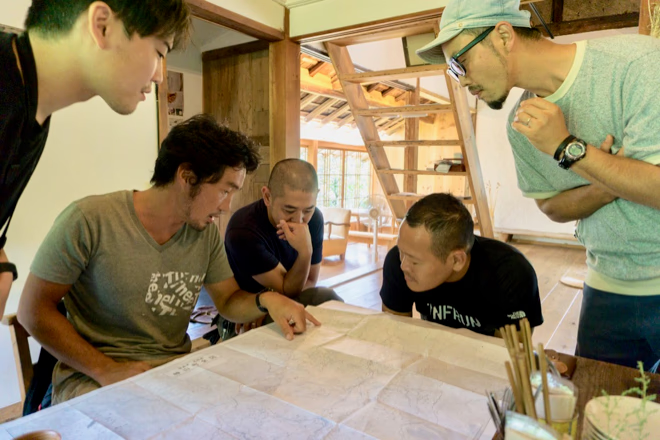
町の地図を広げ、どの川を上るか検討中。
こういうふうに、人と人との関係性の中でなんとなくものごとが決まっていくこと、それを「いいんじゃない」と受け入れる感じ、これは「仕事」という枠組みの中ではあまりないことで、まさに「遊び」でした。
神山には、町も生活も自分たちで「経営」する人がいる
振り返ると「よく遊んだな!」と思える今回の神山滞在ですが、単に楽しかっただけではなくて、参加者それぞれにいろいろなものを得たのではないかと思います。
私の場合、自然の中で遊ぶことの面白さを久々に思い出した、というのがひとつ。
沢登りは結構ハードで、濡れた岩で滑らないように、川の深いところにはまらないように、一歩一歩に集中してなんとかみんなについていきました。でも、そうやって無心になれることが楽しくて気持ちよかった! 凝り固まっていた身体と脳がもみほぐされたような気がします。
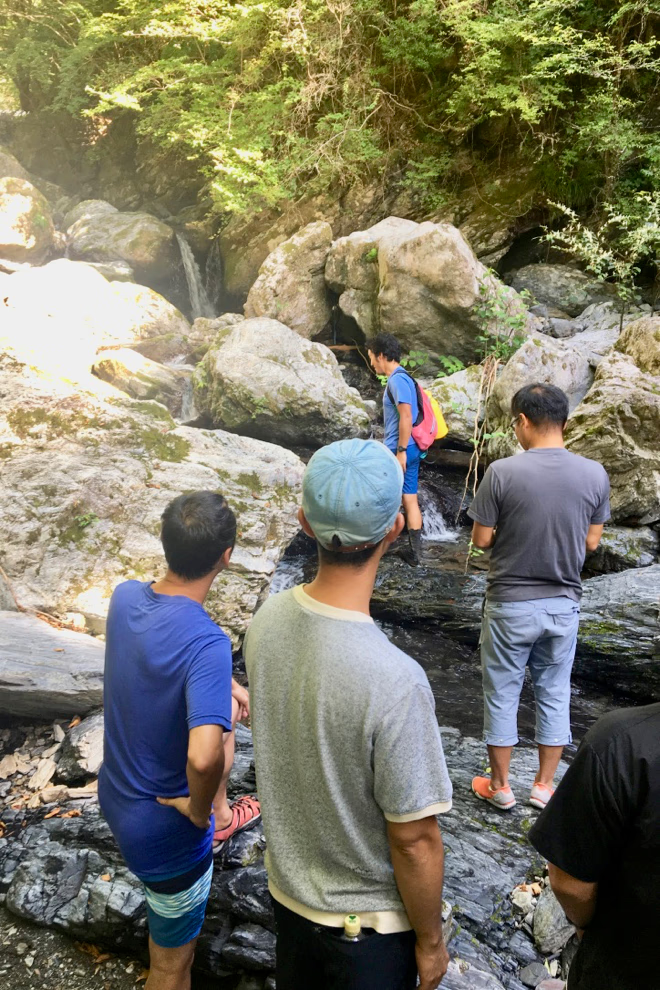
沢登りをスタートしたところ。どんどん上流まで上り、焚き火を囲んで一休みしてからまた戻ってきました。
もうひとつ、「働く」と「生活する」について深く考える時間が得られたのも、大きな収穫でした。
都会で働いていると、住まいとか子育てとか交通手段とか、いわゆる暮らしの部分は周りの人と同じようなやり方を選ぶのが当たり前で、仕事の領域で自分のアイデンティティを確立しようとしている人が多いような気がします。
でも本当は、日常生活全体に自分らしさや思想のようなものを反映させていけたらいいんじゃないかーーそんなことを感じました。
大南さんや郁子さんは、「神山をこんな町にしたい」「こんな暮らしを実現させたい」という自分の理想をもって、他にはない独自のやり方を編み出してきた。そのお話を聞いていると、自分の生活も、仕事も、もっともっといろいろなやり方があるんじゃないか、と思えてきます。
いつも自分の会社や担当する業務の範囲で「どうすべきか」とか「なにか突破口は?」と考えている人が神山で過ごしたら、仕事も生活の仕方も、もっと広く、自由に考えられるようになるんじゃないか。そういうワーク・イン・レジデンスができるということが、神山の新しい魅力として認識されるようになったら面白いな、と思います。
